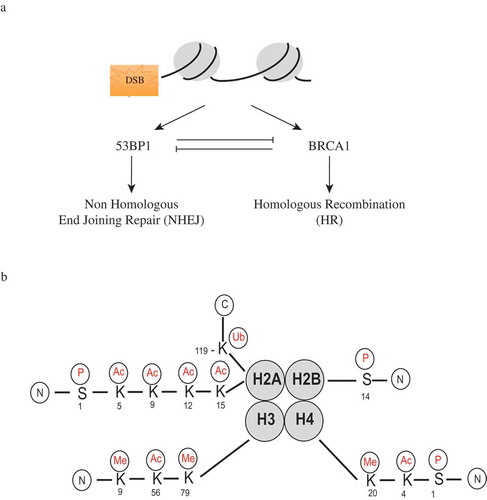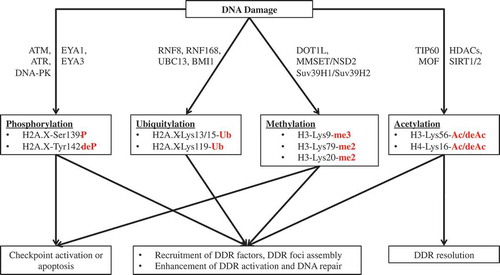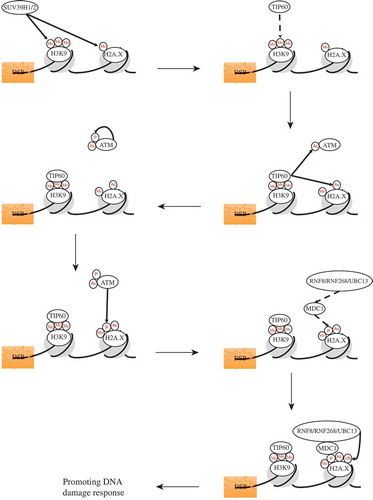Figures & data
Figure 1. Histone modficiations and DNA double-strand break repair. (a) DNA double-strand breaks can be repaired by non-homologous end joining (NHEJ) or homologous recombination (HR). p53-binding protein 1 (53BP1) plays a crucial role in NHEJ, while breast cancer 1 (BRCA1) is important for HR. 53BP1 and BRCA1 mutually antagonize each other’s actions during the repair process.

Figure 2. The various functions of different post-translational modifications of histones in DNA damage responses. P: phosphorylation; deP: dephosphorylation; Ub: ubiquitination; Me: methylation; Ac: acetylation; deAc: deacetylation; H: histone; Lys: lysine; Ser: serine; Tyr: tyrosine.

Figure 3. The interplay of different histone modifications in generating and promoting the DNA damage response. Unbroken arrows illustrate the catalysis action of the proteins; broken arrows illustrate the recruitment of the proteins. P: phosphorylation; Ub: ubiquitination; Me: methylation; Ac: acetylation.

